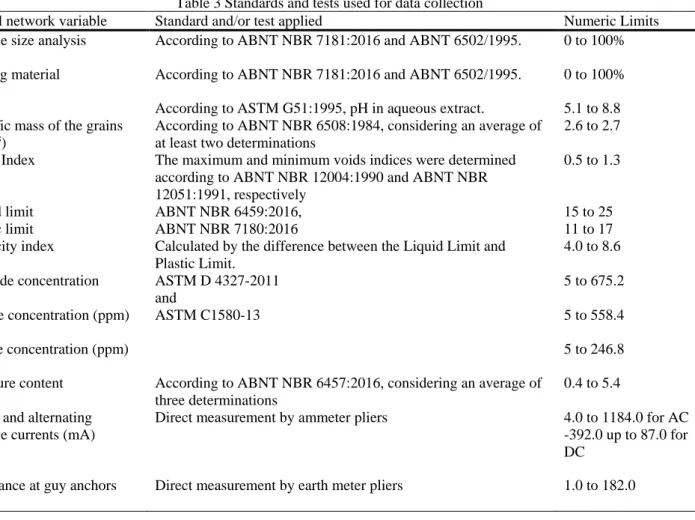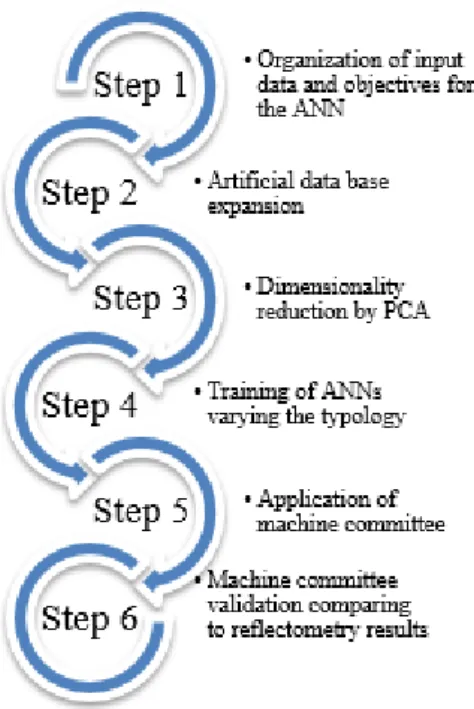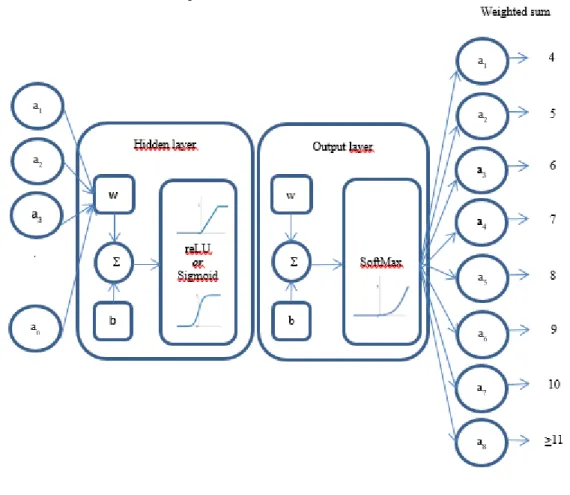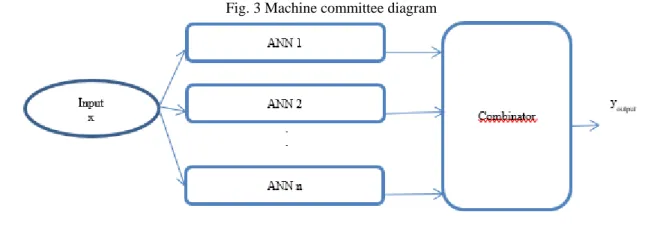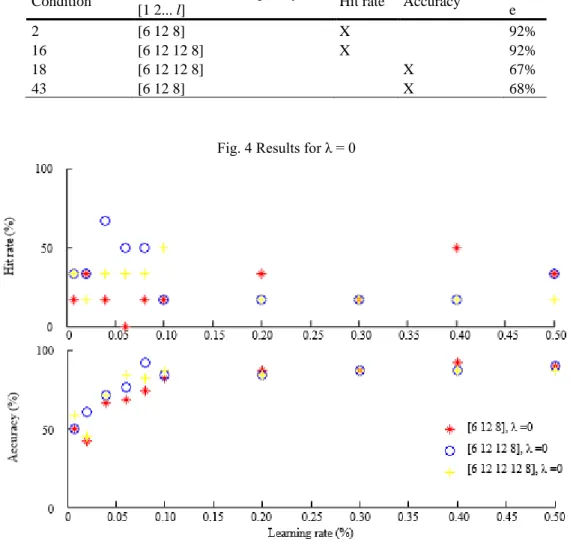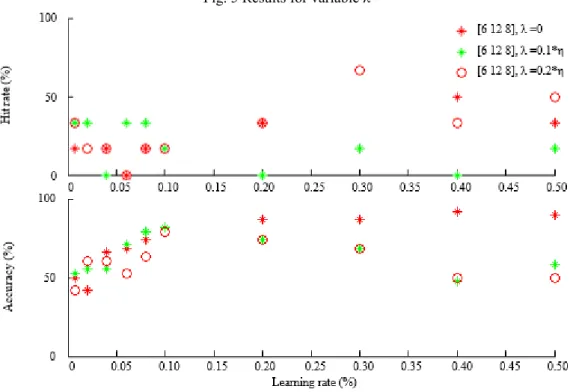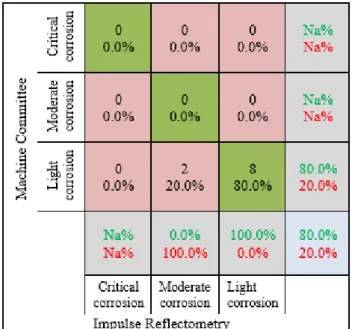Braz. J. of Develop.,Curitiba, v. 6, n. 10, p. 82988-83002, oct. 2020. ISSN 2525-8761
Corrosion Grade on Anchor Rods of Guyed Transmission Towers Applying
Machine Committee
Grau de Corrosão em Hastes de Âncora de Torres de Transmissão Guiadas
Comitê de Aplicação de Máquinas
DOI:10.34117/bjdv6n10-654
Recebimento dos originais: 08/09/2020 Aceitação para publicação: 29/10/2020
Assiel. A. Adada
Instituto de Tecnologia para o Desenvolvimento, Lactec, CEP: 80215-090, Curitiba, Paraná, Brazil
E-mail: assielartur@gmail.com
Tiago S. de Matos
Universidade Federal do Paraná, Programa de Pós-Graduação em Engenharia e Ciências dos Materiais, UFPR-PIPE, Centro Politécnico da UFPR, CEP: 81.531-980, Curitiba, Paraná, Brazil
E-mail: tiago.matos@lactec.org.br
Mariana D´Orey Gaivão Portella Bragança
Estruturas Civis, Lactec, CEP: 81531-980, Curitiba, Paraná, Brazil E-mail: mariana.portella@lactec.org.br
Luiz A. de Lacerda
Instituto de Tecnologia para o Desenvolvimento, Lactec, CEP: 80215-090, Curitiba, Paraná, Brazil
E-mail: alkimin@lactec.org.br
Larissa M. de Almeida
Transmissora Aliança de Energia Elétrica S.A. –TAESA, Praça Quinze de novembro, Centro, CEP 20010-010, Rio de Janeiro, Brazil
E-mail: larissa.almeida@taesa.com.br
ABSTRACT
The use of guyed structures in electric power transmission lines is a growing practice because of their cost efficiency. However, the anchor systems are subject to corrosion, which can lead to their rupture and loss of tower support. Monitoring the evolution of the corrosion of the anchor rods by visual inspection is a destructive and costly method; therefore, there is considerable interest in developing methods and tools that are capable of generating a maintenance diagnosis of the system. This work aimed to propose a classification tool for guyed towers in terms of the corrosion degree by a machine committee with neural networks and applied it to the Paraiso-Açu line located in Rio Grande do Norte in Brazil. Thirty-eight samples were collected and 33 variables related to the soil corrosion along the line were analyzed. The targets for training the networks were obtained from the inspection of anchor rods taken from the field. A simplification of the problem's dimension was proposed by principal component analysis, describing the phenomenon with 6 variables instead of 33, simplifying the practical application by massively reducing the requirements for data sampling in the field. Several network typologies were trained and the best ones in terms of their generalist and specialist capacities were combined in a machine committee for the final proposal of this work.
Braz. J. of Develop.,Curitiba, v. 6, n. 10, p. 82988-83002, oct. 2020. ISSN 2525-8761
The classification obtained by the application of the committee for 10 towers was compared with the classification from non-destructive impulse reflectometry tests and showed an 80% correlation.
Keywords: Artificial neural networks, Machine committee, Guyed transmission tower, Corrosion
grade, Anchor rods.
RESUMO
O uso de estruturas estaiadas em linhas de transmissão de energia elétrica é uma prática crescente por causa de sua eficiência de custos. Entretanto, os sistemas de ancoragem estão sujeitos à corrosão, o que pode levar à sua ruptura e à perda do suporte da torre. O monitoramento da evolução da corrosão das barras de ancoragem por inspeção visual é um método destrutivo e dispendioso; portanto, há um interesse considerável em desenvolver métodos e ferramentas que sejam capazes de gerar um diagnóstico de manutenção do sistema. Este trabalho visou propor uma ferramenta de classificação para torres estaiadas em termos do grau de corrosão por um comitê de máquinas com redes neurais e aplicou-a na linha Paraiso-Açu localizada no Rio Grande do Norte no Brasil. Foram coletadas trinta e oito amostras e analisadas 33 variáveis relacionadas à corrosão do solo ao longo da linha. As metas de treinamento das redes foram obtidas a partir da inspeção das hastes de ancoragem retiradas do campo. Uma simplificação da dimensão do problema foi proposta pela análise dos componentes principais, descrevendo o fenômeno com 6 variáveis ao invés de 33, simplificando a aplicação prática, reduzindo massivamente os requisitos de amostragem de dados no campo. Várias tipologias de rede foram treinadas e as melhores em termos de suas capacidades generalistas e especializadas foram combinadas em um comitê de máquinas para a proposta final deste trabalho. A classificação obtida pela aplicação do comitê para 10 torres foi comparada com a classificação de testes não destrutivos de reflexo de impulso e mostrou uma correlação de 80%.
Palavras-chave: Redes neurais artificiais, Comitê de máquinas, Torre de transmissão Guyed, Grau
de corrosão, Hastes de âncora.
1 INTRODUCTION
The growing use of guyed towers in electric power transmission lines (TL) is mainly due to the excellent economic viability of projects with this type of structure. In this type of tower, the support is provided by steel cables (guys) that connect the upper part of the tower to metallic rods fixed in the ground (anchor rods). The anchor rods are often encapsulated in a cement slurry to protect the metal from direct contact with the soil. However, the formation of encapsulation cracks or malfunctions can lead to the contact of the metal with the soil and the development of corrosive processes that lead to a decrease in the lifetime of the anchoring system. Although corrosion is a natural electrochemical process, where there is a tendency for a material to return to its state of lowest energy, as it is found in nature, this process is destructive from the perspective of material integrity in engineering applications. Direct and indirect corrosion-related costs are estimated at 3% to 4% of the GDP of industrialized countries, respectively, and include equipment replacement, monitoring costs, repair, maintenance and production loss [1-2].
Braz. J. of Develop.,Curitiba, v. 6, n. 10, p. 82988-83002, oct. 2020. ISSN 2525-8761
Although the guyed towers of the TLs have been designed for decades of operation, corrosive processes can lead to the disruption of the anchoring system, leading to a loss of support and tower collapse, causing an interruption in the electricity supply. Currently, the visual inspection process is still used and is quite costly, requiring the transportation of machines and equipment to remote locations. To increase the safety and reliability of the electrical system, it is of vital importance to develop non-destructive diagnosis methodologies and tools for the degree of corrosion of the anchor rods for the proper maintenance of these structures.
Among the variables that may influence the corrosion kinetics of the anchor rods in the soil, one can mention the resistivity, redox potential, pH, humidity, concentrations of chlorides and sulfates, and total acidity. In addition, the electricity transmission lines can generate leakage currents, both direct and alternating, which can influence the kinetics of the reactions, often favoring the corrosive process [3-7].
The non-destructive impulse reflectometry test was developed in the 1990s in Europe and has been applied to the inspection of prestressed cables on bridges and power line anchor systems [9]. The method consists of sending an electromagnetic signal to one end of the cable that is reflected back to the emitter by a reference wire called an “antenna”; by analyzing the reflected signal, anomalies can be detected, such as corrosion and section loss in the lines or cables.
As a complement to existing methods, researchers are using Artificial Neural Networks (ANN) to find patterns between input and output data and to create predictive models, in different knowledge areas. Mariano et. al [10] proposed to estimate the nitrogen-corrected metabolizable energy (AMEn) values of the energetic and protein concentrate feedstuffs for broilers. In their work, it was studied values of error for the Machine Committee formed with 0<N≤1000 numbers of ANN. They propose to use at least 300 ANN combined to decrease error. Barzegar et al [11] compared different machine learning models to estimate uniaxial compressive strength in rocks to support the prediction of the rock failure, achieving the best result with machine committee model rather than a standalone ANN models.
The objective of this study was to propose the diagnosis and prediction of the corrosion degree of guyed towers by a machine committee with artificial neural networks trained from data collected in the field along the Paraiso-Açu transmission line, located in the state of Rio Grande do Norte in Brazil, thus creating a tool able to support the decision making of maintenance operations. The resulting classification of the degree of corrosion in the anchor system of the TL towers studied using the tool proposed in this work was compared with the results of non-destructive impulse reflectometry tests applied on the same structures.
Braz. J. of Develop.,Curitiba, v. 6, n. 10, p. 82988-83002, oct. 2020. ISSN 2525-8761
2 MATERIALS AND METHODS
2.1 MATERIALS
The materials used in this work were a computer with MATLAB R2014a software, a database collected in the field characterizing the soil in which the rods are exposed and rods removed from the field during tower maintenance activities. The database contains 38 anchor samples that were collected along the Paraiso-Açu TL, which has a total of 269 towers.
To create the objectives for the network training, the anchor rods removed from the transmission line were visually inspected one by one and classified by their corrosion degree from 1 to 4 according to the criteria in the first column of Table 1. For each generated classification, a weight factor was assigned according to the last column in these tables. From the sum of the weight factors of the four guy anchors of a given tower, Table 2 was created for the classification of the degree of corrosion for the set of foundations of a tower and its respective interpretation.
Table 1 Qualitative classification of the guy anchor samples
Classification Description of the criteria Weight factor 1 No corrosion or light surface corrosion 1
2 Occasional corrosion with no section loss 2 3 Generalized corrosion with slight section loss 3 4 Generalized corrosion with loss of section
and/or rupture 8
Table 3 was used as input data for the ANN training, with a total of 33 variables, comprising six subclassifications referring to the soil particle size analysis, four subclassifications referring to the soil passing material distribution, and two subclassifications referring to the voids index. Additionally, four alternate current (AC) measurements, four direct current (DC) measurements, and four resistance measurements were taken on the anchor rods, one for each rod.
Table 2 Classification of the degree of corrosion of the tower foundations Sum of weight factors Interpretation
Less than 8 Light corrosion in the tower anchor system. No need for immediate intervention.
Greater than or equal to 8 and less than 11
Moderate corrosion in the tower anchor system. Suggested monitoring by other methods.
Greater than or equal to 11 Critical corrosion in the tower anchor system. Suggested monitoring by other methods and immediate maintenance action.
Braz. J. of Develop.,Curitiba, v. 6, n. 10, p. 82988-83002, oct. 2020. ISSN 2525-8761
Table 3 Standards and tests used for data collection
Neural network variable Standard and/or test applied Numeric Limits
Particle size analysis According to ABNT NBR 7181:2016 and ABNT 6502/1995. 0 to 100% Passing material According to ABNT NBR 7181:2016 and ABNT 6502/1995. 0 to 100%
pH According to ASTM G51:1995, pH in aqueous extract. 5.1 to 8.8
Specific mass of the grains (g/cm3)
According to ABNT NBR 6508:1984, considering an average of at least two determinations
2.6 to 2.7 Voids Index The maximum and minimum voids indices were determined
according to ABNT NBR 12004:1990 and ABNT NBR 12051:1991, respectively
0.5 to 1.3
Liquid limit ABNT NBR 6459:2016, 15 to 25
Plastic limit ABNT NBR 7180:2016 11 to 17
Plasticity index Calculated by the difference between the Liquid Limit and Plastic Limit. 4.0 to 8.6 Chloride concentration (ppm) ASTM D 4327-2011 and ASTM C1580-13 5 to 675.2 Sulfate concentration (ppm) 5 to 558.4 Nitrate concentration (ppm) 5 to 246.8
Moisture content According to ABNT NBR 6457:2016, considering an average of three determinations
0.4 to 5.4 Direct and alternating
leakage currents (mA)
Direct measurement by ammeter pliers 4.0 to 1184.0 for AC -392.0 up to 87.0 for DC
Resistance at guy anchors
(Ω) Direct measurement by earth meter pliers 1.0 to 182.0
Then, to create the targets for the network training, the anchor rods removed from the transmission line were visually inspected one by one and classified by their corrosion degree from 1 to 4 according to the criteria in the second column of Table 1. For each generated classification, a weight factor was assigned according to the last column in the same table. From the sum of the weight factors of the four guy anchors of a given tower, Table 2 was created for the classification of the degree of corrosion for the set of foundations of a tower and its respective interpretation.
Finally, results from impulse reflectometry tests carried out on the foundations of 10 towers at a date prior to the maintenance activity were collected and used to assess the numerical technique.
2.2 METHOD
The analysis methodology was divided into six steps until the final proposal of the machine committee evaluation (see Fig. 1). In step 1, the collected input data were compiled and organized into a matrix with 33 rows and 38 columns, where each row represents an input variable and each column represents a particular tower foundation. The training targets are binary vectors with a total of eight digits, with only one digit assuming a value of 1 at a time, while all others assume values
Braz. J. of Develop.,Curitiba, v. 6, n. 10, p. 82988-83002, oct. 2020. ISSN 2525-8761
of 0. Each activated digit (with value 1) of the target vector represents a sum of the weight factors that classify the corrosion state of the tower anchor system, according to Table 2. The first digit represents a sum of weight factors equal to 4, the second digit the sum equal to 5 and so on, up to the eighth digit which represents a sum equal to or greater than 11. Thus, the target matrix was organized with 8 rows and 38 columns.
Fig. 1 Applied methodology flowchart
The second step consists of the application of the concept of artificial data expansion, widely used for training neural networks. Due to the extension of the transmission line, not all towers had data collected in their integrity for the ANN input. To complete the table of inputs, a linear interpolation was made between two data sampling location points. A problem with the application of this expansion technique is that, on the one hand, it provides more data for network training; on the other hand, there is no guarantee that the artificially created data represent accurate measurements in the specific spot.
In the third step, principal component analysis (PCA) was applied to reduce the dimensionality of the problem in order to simplify the number of input variables for the corrosion degree evaluation. Thus, providing a practical method for planning the TL maintenance program. This work started with 33 variables, reduced after applying the PCA, but still representing at least 95% of the variance of the collected data.
The fourth step was the ANN training. In this work, the neural network training algorithm was programmed in MATLAB based on 4 fundamental error-backpropagation equations [12],
Braz. J. of Develop.,Curitiba, v. 6, n. 10, p. 82988-83002, oct. 2020. ISSN 2525-8761
considering a regularized cross-entropy cost function and sigmoidal transfer function for the hidden layers, given their better performance in neural network training for problems of classification and choice [13-14]. The weights and bias were initiated by a heuristic technique, creating a normal distribution with the mean equal to zero and standard deviation equal to 1
1 nnl , where nnl-1 is the
number of neurons in the immediately preceding layer. In the last layer, the softmax function was used to generate a probability distribution of the activation of neurons by the neural network. The first layer of the network, the input layer, was constructed with n neurons, each representing one of the main variables selected by the PCA. The last layer has 8 neurons, each representing a weighted sum value (Table 2). The basic typology defined in this stage (Fig. 2) was used to train 50 neural networks, varying the learning rate (η), the number of hidden layers, and the regularization factor λ in the cost function (Table 4). The networks were evaluated for accuracy, which consists of predicting new data that were not used during training, and the hit rate, which consists of how well the network represents the data used for training.
Braz. J. of Develop.,Curitiba, v. 6, n. 10, p. 82988-83002, oct. 2020. ISSN 2525-8761
Table 4 Training variations
Typology Learning rate (η) Number of hidden layers Regularization (λ) 1 0.500, 0.400, 0.300, 0.200, 0.100, 0.080, 0.060, 0.040, 0.020 and 0.008 1 Deactivated λ = 0 2 2 Deactivated λ = 0 3 3 Deactivated λ = 0 4 1 Activated λ = 0.1*η 5 1 Activated λ = 0.2*η
The fifth step was the combination of the best networks trained in the fourth step (Fig. 3) by the machine committee technique [15]. The selected networks were those that obtained the best accuracy results or hit rate. The best in terms of accuracy were considered generalists, and those with the best hit rates were considered specialists. Considering that all networks were created with the softmax transfer function in the last layer, which represents the probability distribution of the activation of neurons, the adopted combiner was an arithmetic mean of each neuron of the output layer of each neural network. Considering that the committee was formed by n machines, the activation vector aoutput after the application of the combiner can be described according to equation
1.
The sixth and final step of this methodology consisted of comparing the classification results of the proposed committee with the results of the impulse reflectometry tests on the foundations of 10 towers of the TL. Data from these towers were not used during the training and were therefore used to verify the proposed model. The equivalence adopted between the classification results of each reflectometry test and the proposed machine committee was according to the equivalence presented in Table 5.
Braz. J. of Develop.,Curitiba, v. 6, n. 10, p. 82988-83002, oct. 2020. ISSN 2525-8761
Table 5 Equivalence between classifications and interpretation Impulse reflectometry Classification of the guy anchors (based on Table 1)
1 1 2 2 3 3 4 4 5 6
3 RESULTS AND DISCUSSION
After the application of the PCA in the database of 38 samples with 33 variables, the result indicated that the first 6 principal components represent 96.7% of the data variance, and the variables with the highest coefficients for these first six axes were the four alternating currents in the guy anchors, the concentration of chloride and the concentration of sulfate in the soil.
The importance of alternating currents in the corrosion process, as indicated by the principal component analysis, corroborates the work developed by Adedeji et al [4]. In that study, the authors review the influences of AC to induced corrosion in metal ducts buried. Juchniewicz [3] also conducted experiments and proved that alternating parasitic currents in buried metals greatly increase the consumption of anodes. Considering corrosion as an electrochemical process, the concentrations of chlorides and sulfates in the soil tend to reduce the soil resistivity and therefore favoring the corrosion process [16].
With the PCA, it was possible to propose a reduction in the dimensionality of the problem, considering the variables of greater importance in the first 6 principal components, thus reducing the problem from 33 input variables to only 6. This proposal brings the benefit of simplifying the field application of the method proposed in this study since it proposes a smaller number of tests and measurements of variables without a significant decrease in the representativeness of the variance of the phenomenon of soil corrosion for the anchor rods of TL guyed towers.
Using the 6 main variables inferred from the PCA, the networks were trained according to the variations proposed in Table 4. The legend adopted for the variation in the number of hidden layers of the ANN was [nninput nn1 nn2 nn3 nnoutput], where the first position of the vector represents
the input layer of the ANN, the last position represents the output layer, and the intermediate positions represent the hidden layers. The nn value is the number of neurons adopted for the respective ANN layer. The results obtained in terms of the accuracy and hit rate are shown in Fig. 4 and Fig. 5.
Fig. 4 and Fig. 5 show that the networks trained considering λ = 0 (Fig. 4), that is, without regularization, had no significant improvements with the increase in the number of hidden layers in
Braz. J. of Develop.,Curitiba, v. 6, n. 10, p. 82988-83002, oct. 2020. ISSN 2525-8761
terms of the hit rate. For the network accuracy, the networks with two hidden layers obtained the best generalization capacity. For trained networks varying the regularization factor, as the representativeness of λ in relation to η was increased, there was a reduction in the network performance for higher learning rates, while the networks obtained a better generalization capacity. For the final proposal of the machine committee for the TL, the networks with the best results (Table 6) were taken, both in terms of the hit rate (expert networks) and accuracy (generalist networks). The network trained in condition 2 was a network with one hidden layer, η = 0.4 and λ = 0. The network trained in condition 16 was a network with two hidden layers, η = 0.08 and λ = 0. The network in condition 18 also had two hidden layers, η = 0.04 and λ = 0. The last selected network for condition 43 was trained with one hidden layer, η = 0.30 and λ = 20%*η.
Table 6 Networks chosen for the machine committee with 4 ANNs Condition Number of neurons per layers
[1 2... l] Hit rate Accuracy
Valu e 2 [6 12 8] X 92% 16 [6 12 12 8] X 92% 18 [6 12 12 8] X 67% 43 [6 12 8] X 68%
Fig. 4 Results for λ = 0
With the ANNs chosen, the hit rate of the obtained machine committee was 97.4%. The committee result for the tower classification shows a high hit rate, that is, with a high ability to describe the data used in the training, combined with the weighting of two other generalist networks.
Braz. J. of Develop.,Curitiba, v. 6, n. 10, p. 82988-83002, oct. 2020. ISSN 2525-8761
The result of the committee's hit rate is above any of the individual results of each network, thus showing that the application of the committee machine obtains better classification results than when considering only one neural network individually because it evaluates several networks trained under different conditions.
Fig. 5 Results for variable λ
For the final verification of the proposed machine committee, the classifications of measurements by impulse reflectometry in 10 towers with the classification predicted by the committee were compared. The correlation obtained in this study was 80%, as shown in the confusion matrix plotted in Fig. 6.
Braz. J. of Develop.,Curitiba, v. 6, n. 10, p. 82988-83002, oct. 2020. ISSN 2525-8761
Fig. 6 Confusion matrix (reflectometry x machine committee)
4 CONCLUSIONS
The simplification by PCA of the dimensionality of the problem brought significant benefits for the practical application of the proposed evaluation tool, enabling accurate corrosion degree diagnosis with the measurement of few variables.
The training of neural networks under several distinct conditions and the combination of the best results allowed the proposition of a machine committee for corrosion degree analysis with a better result than any of the individually analyzed networks due to the combination of generalist and specialist neural networks.
None of the 10 towers used to validate the committee had a classification of critical corrosion, either by the impulse reflectometry test or by the committee machine, although the tower samples were classified as critical during the training of the neural networks.
The committee proposed in this work was applied to diagnose the degree corrosion of the foundations of the towers of a particular TL by measuring 6 variables, which were the concentrations of chlorides and sulfates and the four alternating parasitic currents in the guy anchors. An 80% correlation was achieved when comparing machine committee and impulse reflectometry test results. Despite the reasonably good agreement, further tests are necessary to validate the system analysis. For future research, it is suggested a thorough evaluation of the hole parameters such as soil resistivity and resting potential.
Braz. J. of Develop.,Curitiba, v. 6, n. 10, p. 82988-83002, oct. 2020. ISSN 2525-8761
ACKNOWLEDGEMENTS
The authors are grateful for the infrastructure and support in human resources and funding to TAESA (P&D 07130-0045/2016), ANEEL, LACTEC, LACTEC/IEP, CNPq/PIBIT and PIPE/UFPR.
Braz. J. of Develop.,Curitiba, v. 6, n. 10, p. 82988-83002, oct. 2020. ISSN 2525-8761
REFERENCES
[1] Gerhardus HK, Michiel B P H, Thompson NG (2002) Corrosion costs and preventive strategies in the United States.
[2] Syrett B, Gorman J, Arey M, Koch G (2001) Cost of corrosion in the Electric power industry, Electric Power Research Institute (EPRI), Palo Alto, California.
[3] Juchniewicz R (1961) The influence of Alternating Current on the anodic behavior of metals, in 1st International Congress on Metallic Corrosion, London.
[4] Adedeji KB, Ponnle AA, Abe BT, Jimoh AA, Abu-Mahfouz AM, Hamam Y (2018) A Review of the Effect of AC/DC Interference on Corrosion and Cathodic Protection Potentials of Pipelines. International Review of Electrical Engineering. https://doi.org/10.15866/iree.v13i6.15766.
[5] Alamilla JL, Espinosa-Medina MA, Sosa E (2009) Modelling Steel Corrosion damage in soil environment. Corros. Sci. https://doi.org/10.1016/j.corsci.2009.06.052
[6] Andrade C, Garcés P, Martínez I (2008) Galvanic currents and corrosion rates of reinforcements measured in cells simulating different pitting areas caused by chloride attack in sodium hydroxide. Corros. Sci. https://doi.org/10.1016/j.corsci.2008.07.013
[7] Cole IS, D. Marney D (2012) The science of pit corrosion: A review of the literature on the corrosion of ferrous metals in soils. Corros. Sci. https://doi.org/10.1016/j.corsci.2011.12.001
[8] Lazzari L. (2017) Corrosion in Water, Soil and Air. In: Engineering Tools for Corrosion. http://doi.org/10.1016/B978-0-08-102424-9.00005-7
[9] Berenguer RA, Oliveira Junior ER, Silva MWP, Souza GB, Helene P, Monteiro ECB (2016) Guy Structure with Galvanic Corrosion: Case Study. Journal of Civil Engineering and Architecture. http://doi: 10.17265/1934-7359/2016.07.007
[10] Mariano FCMQ, Lima RR, Alvarenga RR, Rodrigues PB, Lacerda WS. (2014) Neural network committee to predict the AMEn of poultry feedstuffs. Neural Comput & Applic. http://doi: 10.1007/s00521-014-1680-3
[11] Barzegar R, Sattarpour M, Deo R, Fijani E, Adamowski J (2019) An ensemble tree-based machine learning model for predicting the uniaxial compressive strength of travertine rocks. Neural Comput & Applic. http://doi: 10.1007/s00521-019-04418-z
[12] Rumelhart D, Hinton G, Williams R (1986) Learning representation by back-propagating errors. Nature. https://doi.org/10.1038/323533a0
[13] Plunkett K, Elman J (1997) Exercises in rethinking Innateness MIT Press
[14] I. Goodfellow I, Bengio Y, e A. Courville A (2016) Deep Learning. http://www.deeplearningbook.org/. Accessed 28 December 2018.
Braz. J. of Develop.,Curitiba, v. 6, n. 10, p. 82988-83002, oct. 2020. ISSN 2525-8761
[15] Haykin S (1999) Neural Networks - A Compare Found. Prentice Hall International Inc, Ontario
[16] Stott JFD, John G, Abdullahi AA (2018) Corrosion in Soil. In: Reference Module in Materials Science and Materials Engineering. http://doi.org/ 10.1016/B978-0-12-803581-8.10524-7

